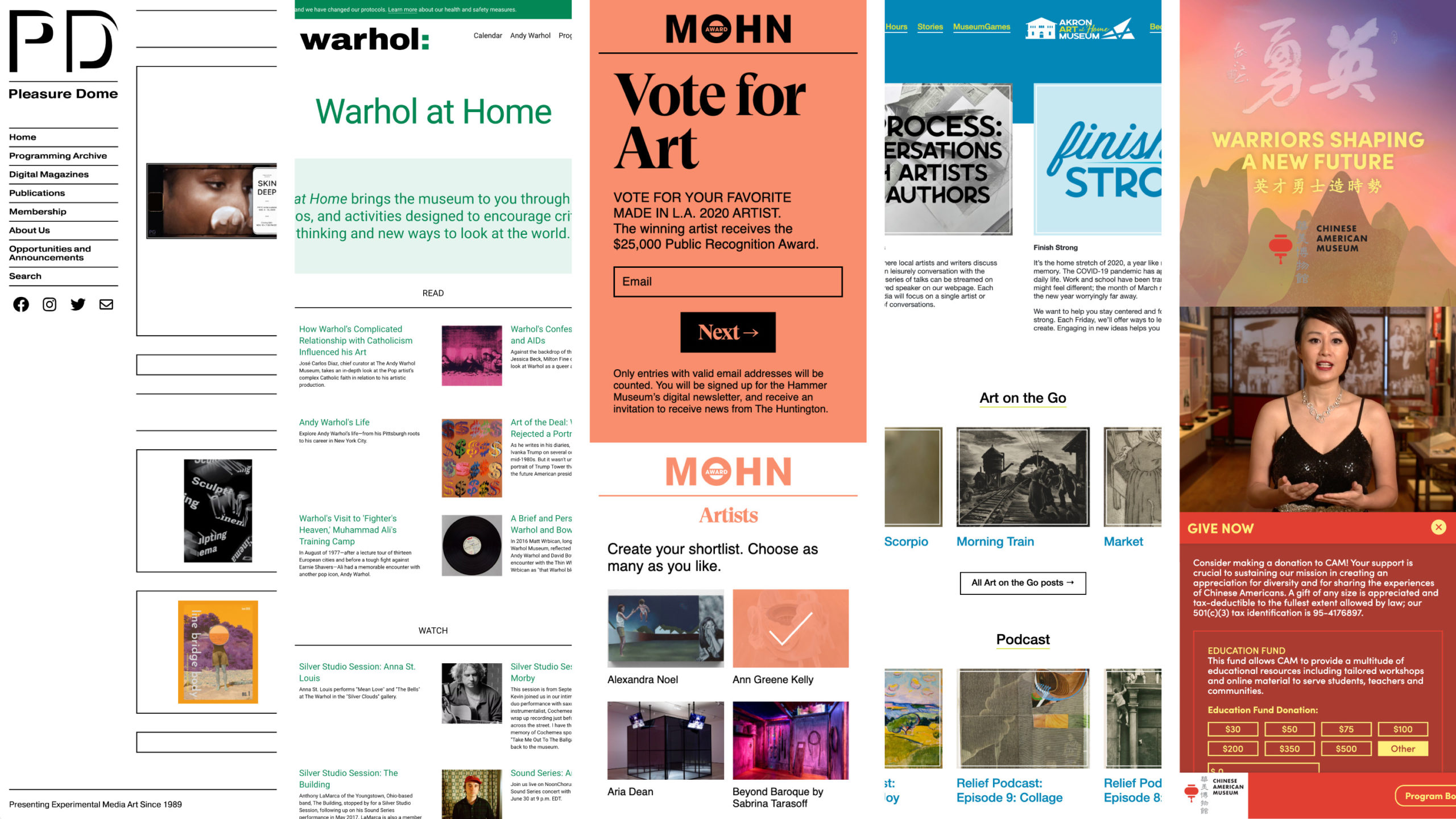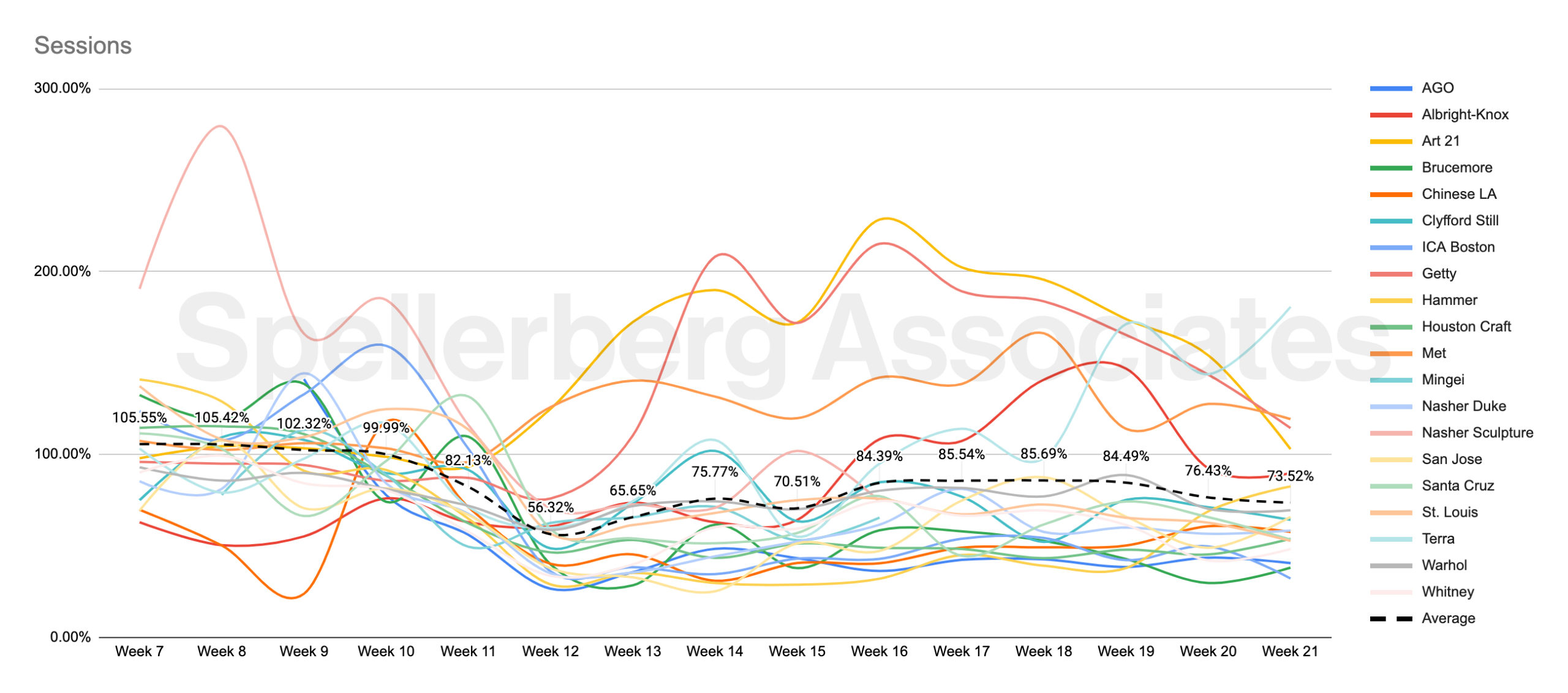COVID-19 Museum Web Traffic Charts

“Bitter Tears,” paintings on tuna cans(!) by Patrick Gorman, a Texas-based artist from Dallas. He has a BFA in painting from Texas State University and began focusing on collage and assemblage in 2021.
“Two Realities,” by Hannah Purvis, at our Main St gallery. These figurative paintings explore technology, the artist’s identity as a neurodivergent female, and unrealistic beauty standards created by social media.
“The Artist’s Studio,” paintings by Alex Renbarger, at our Main St gallery. This series depicts what a painter sees on a daily basis. The works uses a muted and minimal color palette, with inorganic lines and strong sources of light.
“De Aquí y De Allá (From Here and There),” paintings by Alejandra Gonzalez Zertuche at our Main St gallery. Drawing from the artist’s memories and family stories, this work depicts the journey of crossing the Rio Grande from Mexico and life in the US.
This winter/spring we are presenting the work of current or recent Texas State University students. Artist/curator Michael Villarreal did a prodigious job coordinating the painting shows.
“Like and Subscribe,” a screening of video work from first-year Texas State Expanded Media students, at our Masur Gallery. This event was presented in collaboration with Experimental Response Cinema.
Show in thread “Spellerberg Projects Winter 2021/Spring 2022”
“Fade Like a Sigh,” photographs by Zora J Murff and Rana Young, at our Main St Gallery. The artists explore the void left by an absent parent and highlight the relationship between the photographic record and the fragmented nature of memory.
“The Ocean Between Us (bein hai ben chung ta),” painting, sculpture, and installation by Loc Huynh, at our Main St gallery. This work depicts the bond between the artist’s maternal grandparents despite their geographic distance from each other.
“Together with the Earth,” paintings by Suzy González, at our Main St gallery. The artist’s materials includes corn husks, which references Mesoamerican beliefs that our very beings are created from maíz. Runs Sept 3- 25, 2021.
Gallery update! We have partnered with ICOSA, an Austin-based artist collective, for the programming of the Fall 2021 season. Artist/curator Michael Villarreal did a prodigious job coordinating the effort.
“EN MASS,” a group exhibition by members of the ICOSA Collective, at our Masur Gallery. The show takes full advantage of the grand space, with works exploring scale and texture. Opened Sept 3 and runs into the winter.



Made under the ☀ in Austin, Texas.
WordPress hosting by WP Engine, thanks y’all!
© 2025 Spellerberg Associates